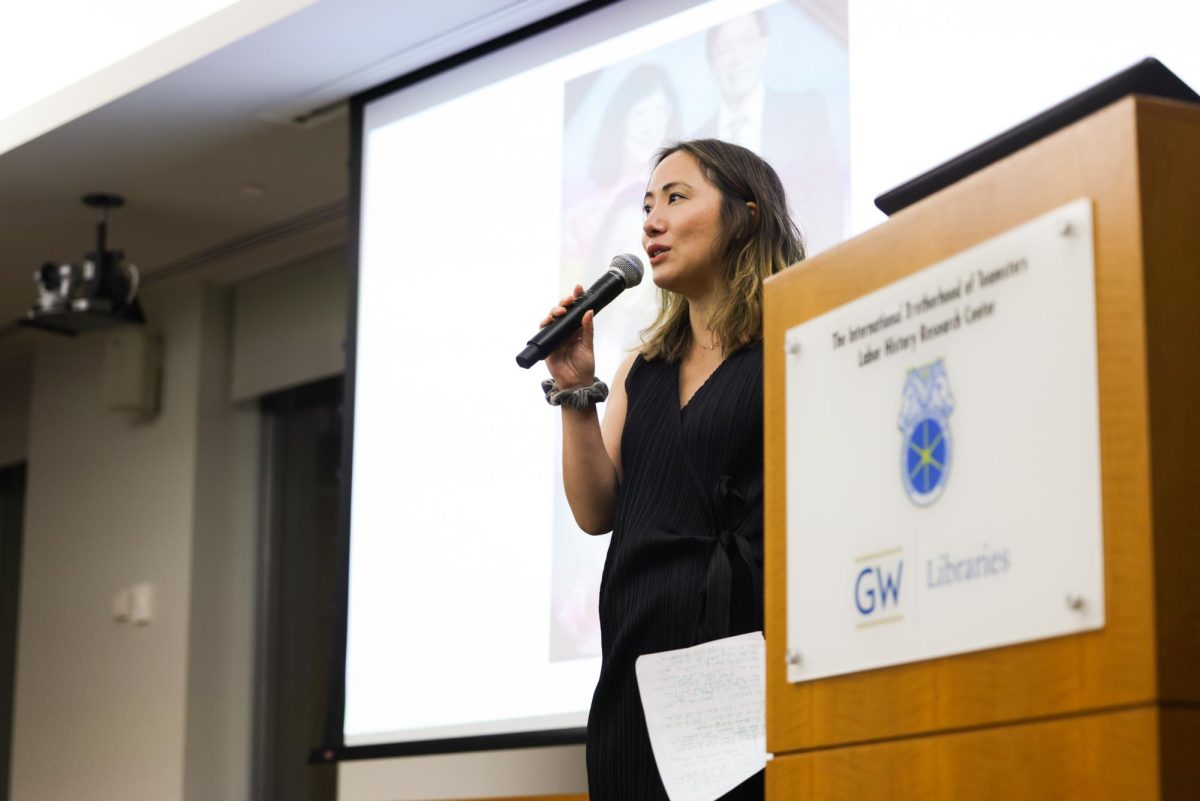At 5:15 a.m., Steve Badt opens up the doors and starts stirring pots and sprinkling seasonings with two other chefs as they cook breakfast, lunch and dinner for just $1 per plate.
They prepare for the first of 300 guests to arrive by 6:30 a.m. at one of D.C.’s most prominent soup kitchens. Located on the edge of campus, Miriam’s Kitchen stands behind the Lerner Health and Wellness Center at 24th and G streets.
Badt, the 45-year-old senior director of meals and volunteer engagement, spent eight years working as a chef in high-end restaurants in Boston, New York and D.C. In an unusual career shift, he abandoned the world of luxury cuisine to work at Food and Friends, a nonprofit organization that delivers meals to homebound HIV/AIDS patients, and then joined the staff of Miriam’s Kitchen 12 years ago.
“I wanted to try to do more for the community. I was able to pursue my passion for cooking and managing a kitchen, but at the same time help people who were in need,” Badt, who holds a master’s degree in nonprofit management, said.
He looks to create a nutritous fine dining environment, serving up foods ranging from omelets to French toast with berry sauce and oatmeal, for his clients. Some homeless visitors eat salad for breakfast – potentially the only vegetables they will have all day, he said.
For Badt, ensuring that volunteers feel a sense of community and want to continue working at Miriam’s Kitchen is a priority. He regularly challenges them to prepare meals they would serve their own families.
“We don’t want a volunteer to leave Miriam’s Kitchen until they move or they die,” he said jokingly.
Emily Hagel, the newest chef at Miriam’s Kitchen, started off in the nonprofit sector and has worked across the globe, from Afghanistan to Turkey and Guatemala, but she never gave up her love for cooking. Hagel, 31, then went to culinary school and worked for restaurants and food trucks before signing on as a chef with LivingSocial.
She began her time at Miriam’s Kitchen as a volunteer, working every Tuesday morning on the breakfast shift. Hagel decided to combine her love for two things: food and service.
“This was what kept me going. This was this little glowing, amazing place that you can put your food skills to really great practice,” Hagel said. “You touch someone’s food and you touch their life.”
In her new role, Hagel said one of her main goals is to make the Foggy Bottom and GW communities more engaged, whether it’s by working to increase the number of volunteers or getting donations from local herb and vegetable gardens.
The third chef, John Murphy, began working at the kitchen in 2010. Prior to working at Miriam’s Kitchen, he spent 10 years in the restaurant industry.
A half hour into his first day as a volunteer, Badt hired him.
Murphy spearheaded the dinner program with Badt. Badt’s menu – inspired by restaurant-style daily specials – also must accommodate the limited variety of donated ingredients. Part of that challenge, Murphy said, is not knowing what kinds of food will be provided at any given moment.
“I don’t know when venison will be donated again, or when I’ll have ducks again. If you see those cooking shows like ‘Top Chef…’ that’s about every day of my life,” Murphy, 25, said. He added that while it can be frustrating, he enjoys the element of surprise.
Badt’s days are much shorter than they were at his old 12- to 14-hour kitchen marathons, but he said he still gets the same thrill.
“I’m here until I move or I die,” he said.





